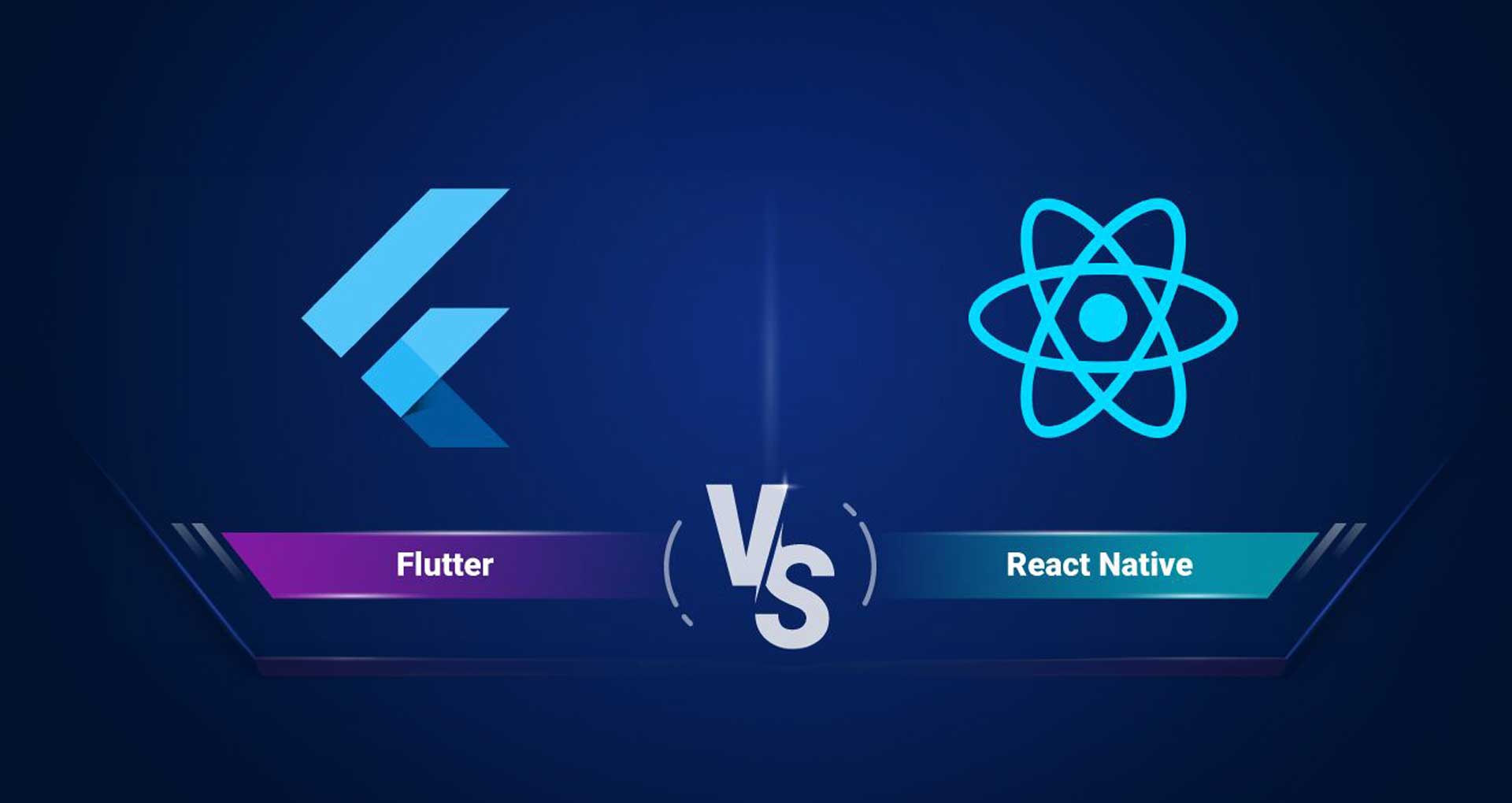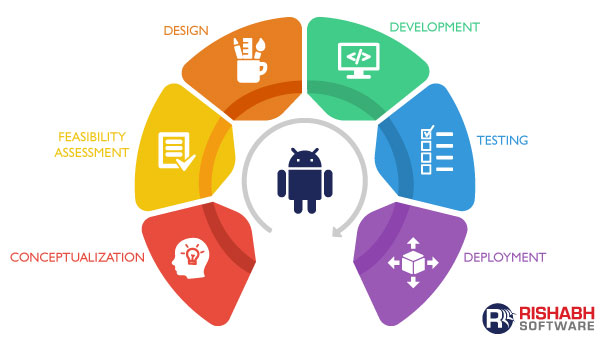There are a number of cross-platform mobile app development frameworks available and choosing the right one is crucial to build robust, user-friendly applications across iOS and Android. Flutter and React Native, created by Google and Facebook, are the popular choices to build high-performing apps while minimizing development time and effort.
These frameworks are the frontrunners in multi-app development, but which one fulfills your business needs, and which is better flutter or react native? This decision won’t be easy to conclude; it requires many factors to be considered, such as your project’s unique requirement, budget aspects, complexity, scalability, and many more.
Keeping that in mind, here is an extensive difference between React Native vs Flutter. This detailed comparison blog will help your business to make an informed decision to select the most suitable technology.
Difference Between React Native and Flutter
One of the fundamental differences lies in their programming languages. React Native is based on JavaScript and utilizes JSX, whereas Flutter operates using the Dart programming language. Another differentiating factor is their architectural approach; React Native and Flutter diverge significantly in their framework architectures. Understanding these differences is essential for businesses seeking to select the most suitable framework for their cross-platform mobile app development needs. Below is the table highlighting the key comparison between React Native and Flutter.
| Aspect | Flutter | React Native |
| Language | Dart | JavaScript (React) |
| Framework Ownership | Developed and maintained by Google | Developed and maintained by Facebook (Meta) |
| Performance | Generally faster due to compiled code (ahead of time) | Slightly slower due to JavaScript bridge communication |
| UI Components | Offers its own set of customizable widgets | Uses native components wrapped in React Native |
| Development | Hot Reload for quick code changes and updates | Fast Refresh for immediate updates |
| Code Reusability | High code reusability across platforms | High code reusability across platforms |
| Community Support | Smaller community compared to React Native | Larger community with extensive third-party libraries |
| Native Features Access | Direct access to platform-specific APIs | Access to native modules through bridging |
| Development Environment | Flutter provides a complete package for development | React Native requires additional dependencies and tools |
| Popularity | Gaining popularity rapidly | Established and widely adopted in the industry |
| Learning Curve | Steeper learning curve due to Dart language | Relatively easier learning curve for JavaScript developers |
| Ecosystem | Limited compared to React Native | Rich ecosystem with numerous plugins and modules |
| Stability | Known for stability and consistency in performance | Occasionally prone to issues due to reliance on native components |
Similarities Between Flutter and React Native
Flutter and React Native, both the frameworks support the concept of one codebase for multiple mobile platforms (Android and iOS). Both of these cross-platform frameworks have active communities that contribute to their ecosystems. Apart from this, there are several similarities to address, let us dive deep into the concise descriptions of each similarity between Flutter and React Native.
- Cross-Platform Development: Flutter and React Native enable businesses to write code once and deploy it across iOS and Android platforms, promoting efficiency through code reusability.
- Native-Like Performance: React Native and Flutter utilize native components, ensuring high-performance apps with a responsive user interface despite differences in their underlying architectures.
- Hot Reloading: Both frameworks support hot reloading, allowing businesses to see immediate re-rendering of changes in the app’s UI or functionality without restarting the entire application. This enables faster prototyping, and iteration, thus speeding up the development process.
- Large and Active Communities: These mobile app development frameworks have vibrant developer communities, offering extensive documentation, tools, libraries, and support, contributing to their growth and providing resources for developers.
Flutter vs React Native: Detailed Comparison
Flutter and React Native have their strengths and weaknesses in various aspects related to performance, programming language, UI capabilities, development environment, community, adoption, code compilation, and documentation. The choice between both frameworks depends on specific business requirements. Let’s compare flutter vs react native frameworks in detail based on various parameters.
Performance
Flutter
- It utilizes Dart language and employs its rendering engine.
- It offers consistent and smooth performance due to its “write once, run anywhere” nature, resulting in efficient UI rendering.
- Uses Ahead-of-Time (AOT) to compile code directly into native ARM code for iOS and Android which results in faster app startup and smoother performance.
React Native
- It relies on JavaScript, requiring a JavaScript bridge to interact with native components.
- Occasionally, it faces performance issues due to the bridge, causing a slight lag compared to Flutter.
- Optimizations and third-party libraries might be necessary for achieving native-level performance.
Programming Language
Flutter
- Flutter relies on Dart, a contemporary language specifically crafted for client-side development, celebrated for its emphasis on type safety, swift execution, and robust object-oriented characteristics. Dart’s features contribute to Flutter’s efficiency and the creation of high-performance applications.
- However, transitioning to Flutter may pose a steeper learning curve for developers unfamiliar with Dart.
React Native
- React Native uses JavaScript and its extensive ecosystem, a widely recognized and extensively used language in software development. Its familiarity and broad adoption simplify the onboarding process for developers.
- Developers familiar with JavaScript can swiftly adapt to React Native, making onboarding easier.
UI Capabilities
Flutter
- The framework employs its own set of customizable widgets for building UI, offering various designs.
- Provides a consistent look across platforms due to its custom rendering engine.
React Native
- React Native utilizes native components to render UI elements, allowing for a more native appearance.
- It relies on native platform UI components, which might require additional work to maintain consistent design across platforms.
Development Environment
Flutter
- It offers a comprehensive and integrated development environment with tools like Flutter Inspector, DevTools, and hot reload for faster iteration.
React Native
- React Native can be developed using various text editors or IDEs, with popular choices being Visual Studio Code and React Native CLI. It also supports hot reloading for rapid development.
Community and Ecosystem
Flutter
- Flutter boasts a thriving and burgeoning community that actively contributes to its ecosystem, continuously expanding with various packages and plugins. This vibrant community support contributes to the framework’s evolution and accessibility.
- Google actively supports the growing community, ensuring regular updates and documentation for a rich ecosystem that’s actively expanding.
React Native
- React Native, in contrast to Flutter, benefits from an established community that has grown within the market over time. This well-established community has provided dedicated support and resources for developers.
- Due to its widespread adoption, it provides a vast collection of third-party libraries and components.
Popularity and Adoption
Flutter
- The open-source framework continues to gain popularity steadily, especially among businesses looking for a cross-platform solution with good performance and a consistent UI.
- Notably, major industry giants have used Flutter to develop their applications.
React Native
- The JavaScript-based mobile app framework has a longer track record and widespread adoption by various companies, making it more commonly used in production applications.
- Many large companies have incorporated this framework into their development ecosystem.
Code Compilation
Flutter
- Flutter employs Ahead-of-Time (AOT) compilation to translate code directly into native machine code before runtime, facilitating quicker execution and optimal performance. This method eliminates interpretation during runtime, enhancing efficiency and reducing potential performance bottlenecks.
- AOT compilation allows for smoother animations and faster startup times compared to JIT compilation. It gives the app a competitive edge by directly executing compiled native code, resulting in a more responsive and seamless user experience.
React Native
- It relies on a JavaScript bridge to communicate with native modules, occasionally leading to performance overhead due to the translation between JavaScript and native code. This communication layer might introduce latency, impacting overall performance.
- The reliance on a JavaScript bridge can result in slower rendering speeds for complex UI components or interactions. It is usually because the translation process between JavaScript and native code may introduce delays, affecting the user interface’s responsiveness.
Documentation and Support
Flutter
- Flutter offers comprehensive and well-maintained documentation along with official guides and tutorials.
- You benefit from regular updates and support from the Flutter team and the community.
React Native
- It provides extensive documentation and resources, supported by a vast community and numerous online tutorials.
- Due to its more extended presence, resources for troubleshooting and problem-solving are abundant.
Flutter vs React Native – What to Choose When?
Flutter excels in scenarios requiring high-performance applications with a consistent UI across platforms. Whereas, React Native with its vast library and prebuilt UI components shines in situations that need rapid prototyping and MVP development. Here are some points that will help you understand what to choose when.
Flutter
- Suitable for strict project timelines and fixed budgets.
- Reduces development costs by using a single codebase across platforms.
- Ideal for creating personalized UI with customizable widgets, minimizing testing needs.
React Native
- Excels in scaling up existing apps with cross-platform modules.
- Facilitates the development of unique shared APIs.
- Great for building lightweight native apps with specific performance requirements.
How Rishabh Software Can Help with Flutter and React Native App Development?
Rishabh Software is a proficient cross-platform app development company, specializing in Flutter and React Native development services. Our mobile team brings a proven track record of delivering outstanding custom mobile app solutions, within budget and on time.
Our focus is delivering native-grade performance, captivating UI/UX, sustained support, and thorough testing to ensure remarkable app quality and top-notch cross-platform functionality. From conceptualization to post-deployment maintenance, we offer end-to-end support throughout the multi-platform mobile app development lifecycle.
Our experienced and adept team assists in seamless transitions, guiding the migration of native applications to Flutter or React Native-based cross-platform apps. We also excel in elevating existing apps to the latest framework versions, ensuring superior scalability, speed, and adaptability. With us, you can trust that your app development project is in capable and reliable hands.
Frequently Asked Questions
Q: What are the Flutter vs React Native Pros and Cons?
A: When choosing between both frameworks, it is essential to understand the advantages and disadvantages of them. Here is some prominent Flutter vs react native pros and cons.
React Native Pros:
- Larger community support due to its extended existence in the market.
- Access to numerous third-party libraries and plugins.
- Utilizes JavaScript, a widely known programming language.
- Provides a smoother native feel due to direct rendering.
React Native Cons:
- Occasionally, it faces performance issues due to the JavaScript bridge connecting with native modules.
- It is relatively slower when compared to Flutter in terms of rendering complex UI.
Flutter Pros:
- Fast development and hot reload feature for quicker testing and debugging.
- Consistent and customizable UI across platforms with its set of widgets.
- High-performance apps due to direct compilation to native code.
Flutter Cons:
- Smaller community compared to React Native.
- Requires learning Dart, which may not be as widespread as JavaScript.
Q: Can I use Flutter and React Native together?
A: The answer is Yes. Using both frameworks in the same app is possible, but it is not advisable. Combining both frameworks in a single application could lead to complexities in code management, integration, and potential conflicts. Flutter and React Native operate independently and have a way of handling UI, state management, and native module interaction.
Q: Flutter and React Native – Which platform offers better security and data privacy features?
A: Whether it be React Native or Flutter, both provide robust security features, but the ultimate security of an application depends more on how developers implement security measures rather than the framework itself. Both frameworks allow for secure coding practices, data encryption, secure storage, and communication protocols.
The security and data privacy of an app developed using React Native or Flutter depend on how well the developer implements these best practices and adheres to security guidelines.
Q: Is Flutter faster than React Native?
A: Projects that use Flutter follow the native code, resulting in optimal performance. However, performance glitches are possible if graphics routines are not regularly optimized. Additionally, this framework is excellent for managing CPU-heavy operations & memory. It has emerged as the best choice among app development companies for addressing varied project requirements, specifically offering apps with unique & attractive animations along with an intuitive UI.
React Native, on the other hand, while being a superior framework, fails to deliver the best performance. By combining native and JavaScript languages, developers require additional interactions to boost the application’s performance.











 30 Min
30 Min


